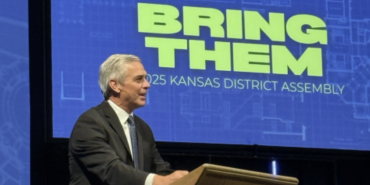Q&A: How are Changes Made to the Nazarene Manual?

Changes are made in the Manual every four years at the General Assembly where district elected delegates discuss and evaluate resolutions that have been submitted to the general secretary’s office from districts and other groups. This is outlined in Manual par. 902.7. No resolutions are submitted by one individual alone. Resolutions typically address perceived needs and ways to improve the work of the church. They may clarify existing paragraphs or offer new ideas and procedures.
Over the course of the quadrennium (the four-year interval between General Assemblies), resolutions are received by the general secretary. Most of the resolutions are submitted during year four. A December 1 deadline has been established by the General Assembly Rules of Order, also included in Manual par. 902.7.
The general secretary gives a temporary assignment to one of seven legislative standing committees or two special committees. The standing committees are: Local Administration (LA), District Administration (DA), General Administration (GA), Christian Action (CA), Stewardship and Finance (SF), Church Program (CP), and Ministry and Education (MED). Special committees include Special Judicial (JUD) and Special Resolutions (SR). The chairpersons and secretaries of these committees are appointed by the Board of General Superintendents. Along with the Manual Editing Committee, they comprise the Reference Committee. This group meets in January before General Assembly in June to review and give final placement to the resolutions.
Staff members in the general secretary’s office prepare the resolutions for delegates to read before coming to General Assembly. The resolutions are also made available to the general public. The legislative committees begin their work on Friday and Saturday before the first plenary business meeting on Monday of Assembly. After discussion, the committees recommend “adoption,” “amendment and adoption,” “rejection,” or “referral.” The general secretary’s office staff processes these reports for presentation to delegates in plenary business meetings. After debate, the delegates vote to adopt, to amend and adopt, to reject, or to refer to the Board of General Superintendents or another entity for study and possible action. The Manual Editing Committee keeps a record of the actions taken by the assembly.
In the months that follow General Assembly, the Manual Editing Committee meets to place implementing legislation from resolutions in the proper paragraphs within the text of the Manual. They also work to harmonize existing paragraphs and to make the Manual readable and useful.
Resolutions on the Articles of Faith are reviewed by the Special Judicial Committee and are recommended for referral to a study committee of theologians and pastors. They are either “amended or referred,” or they are rejected. These resolutions cannot be adopted until they have been studied for four years (Manual par. 27).
David P. Wilson is General Secretary of the Church of the Nazarene.
Holiness Today, September/October 2017
Please note: This article was originally published in 2017. All facts, figures, and titles were accurate to the best of our knowledge at that time but may have since changed.




